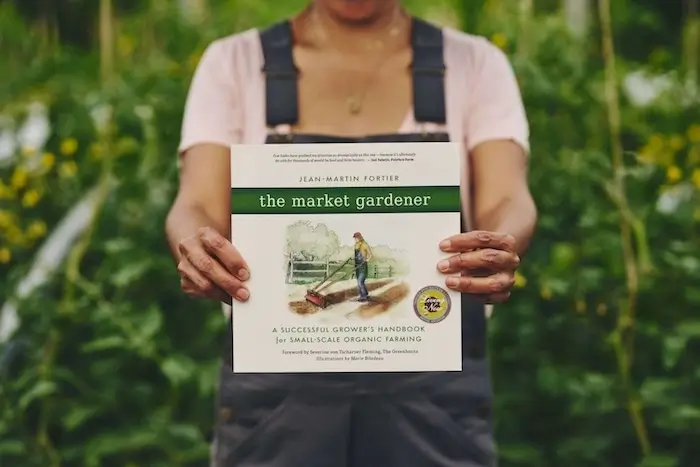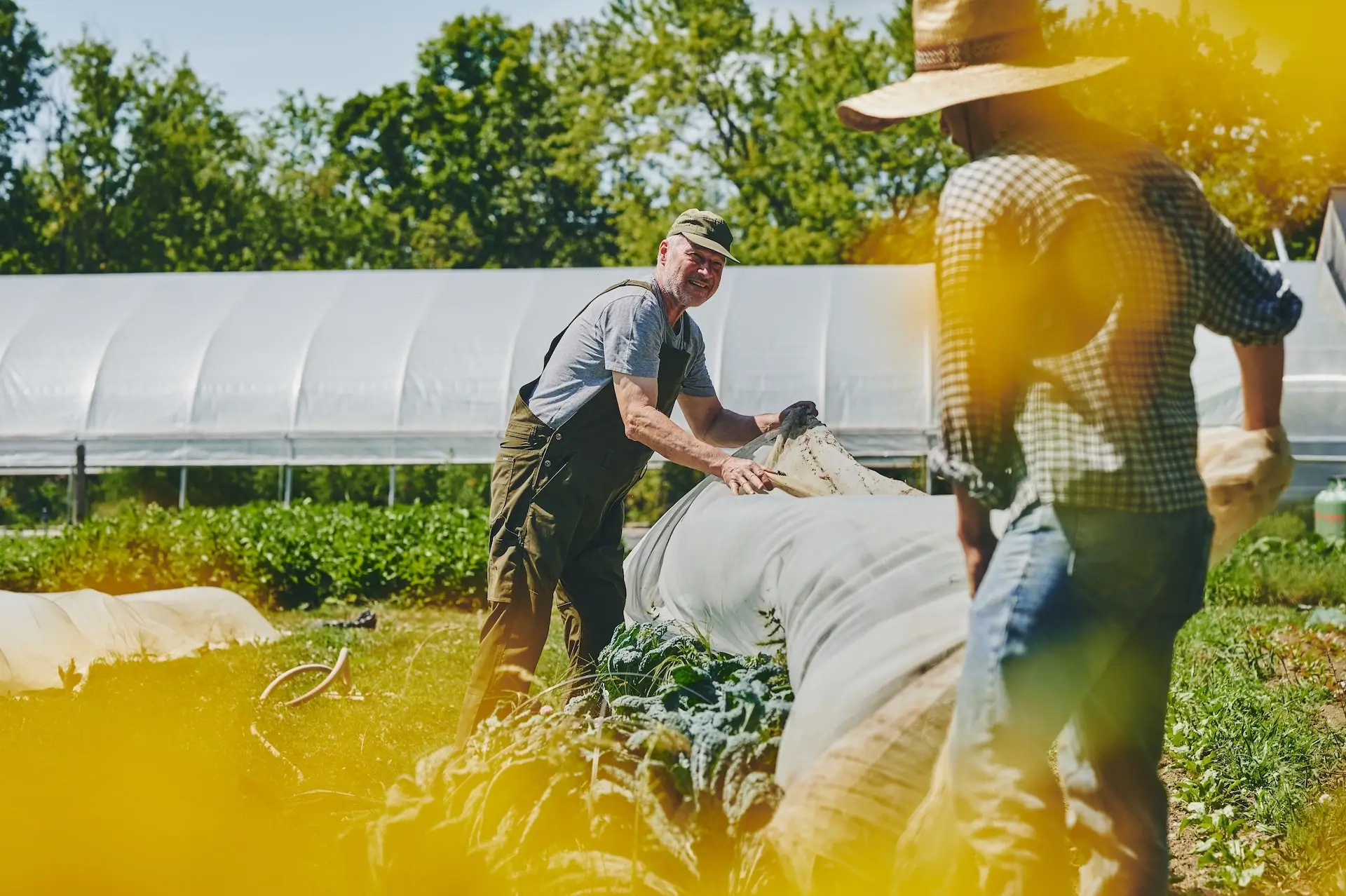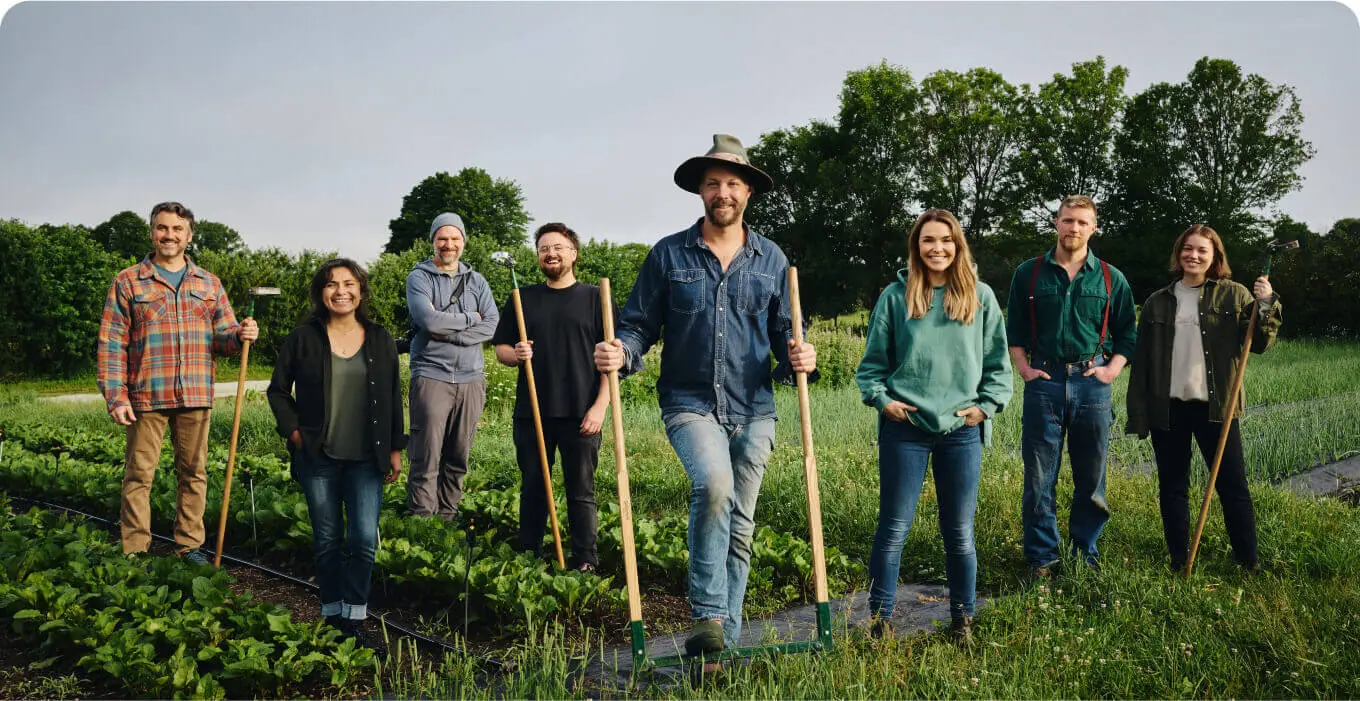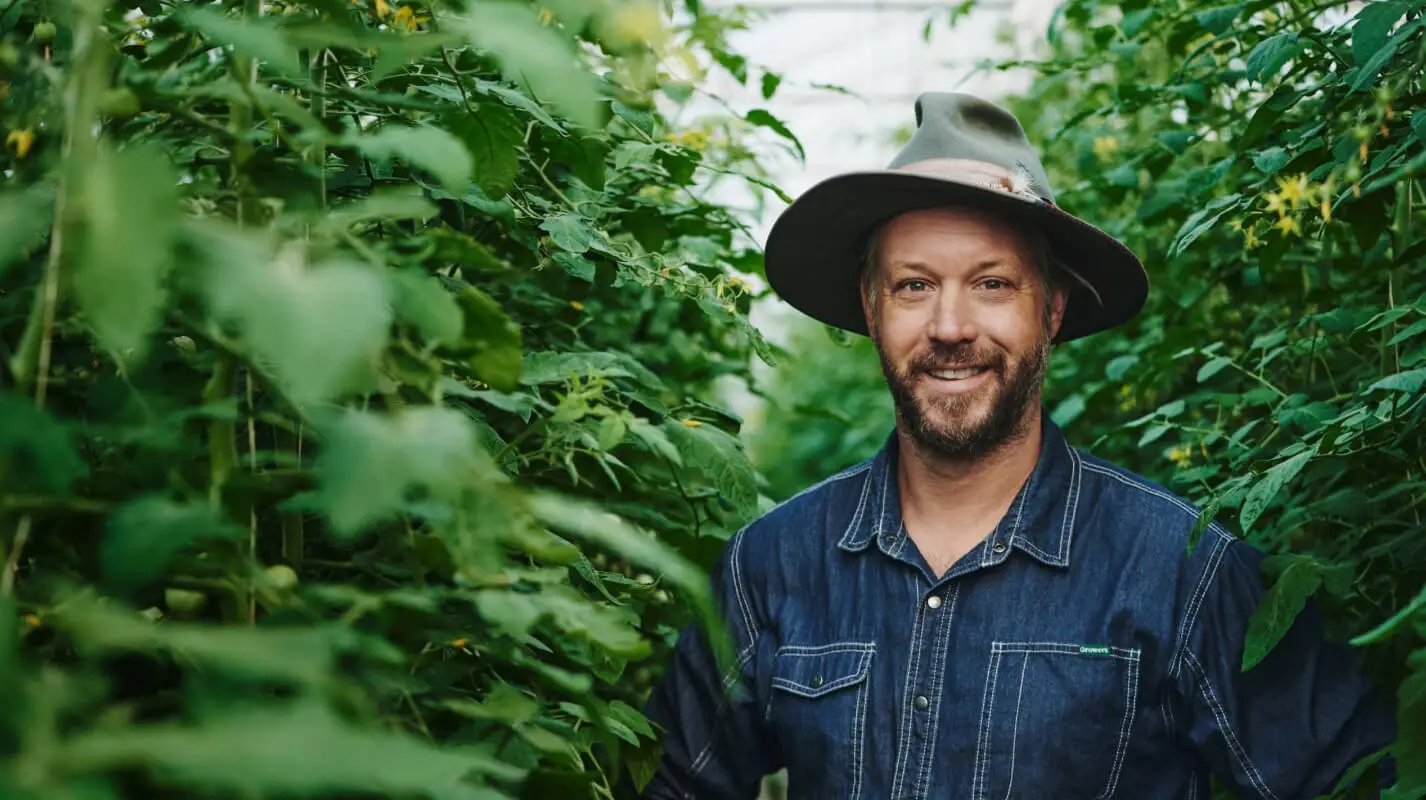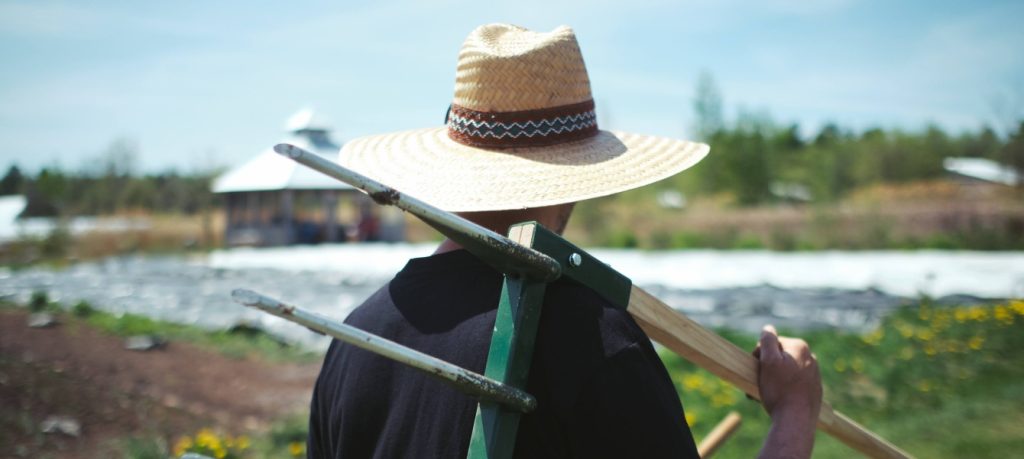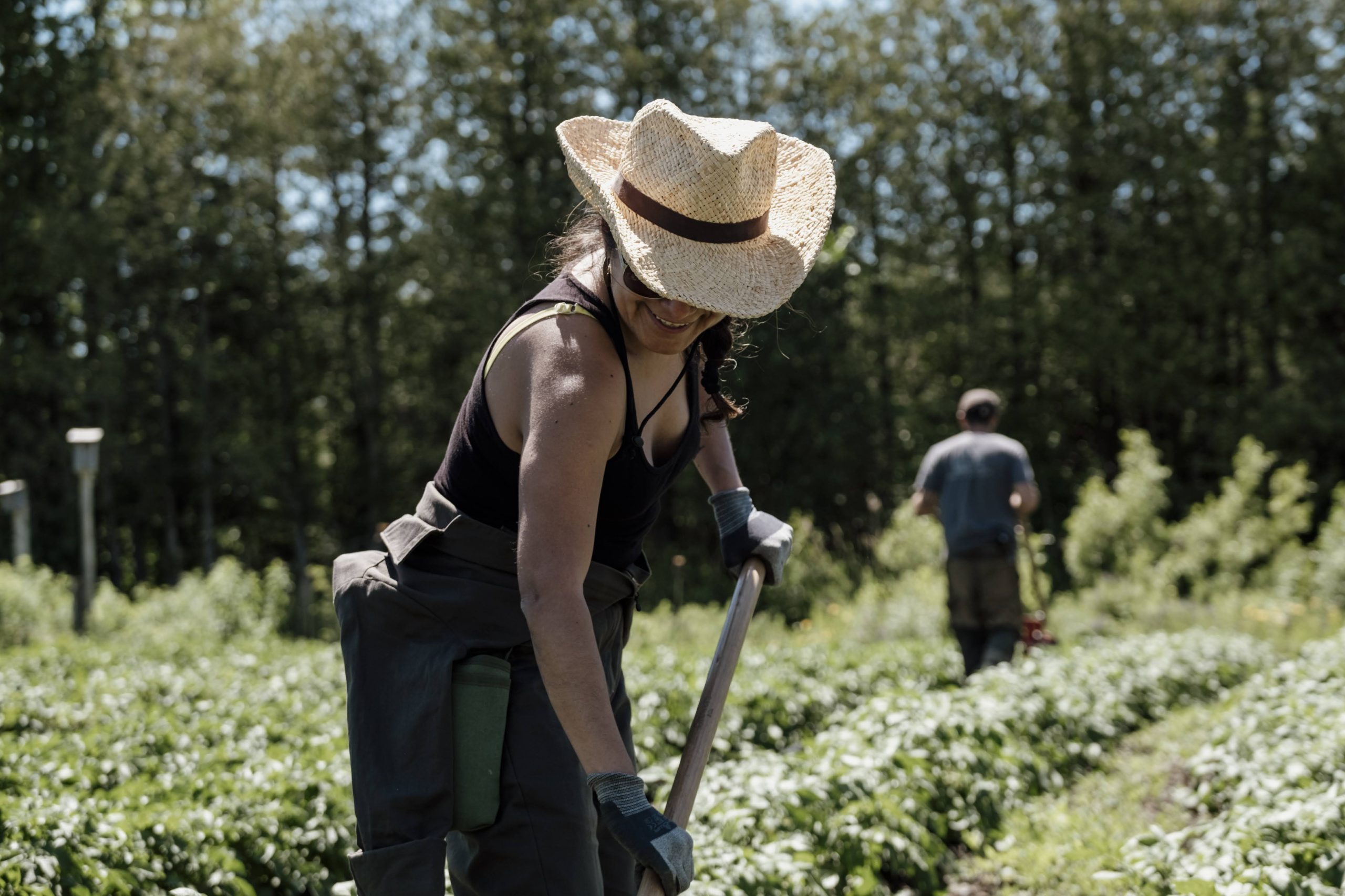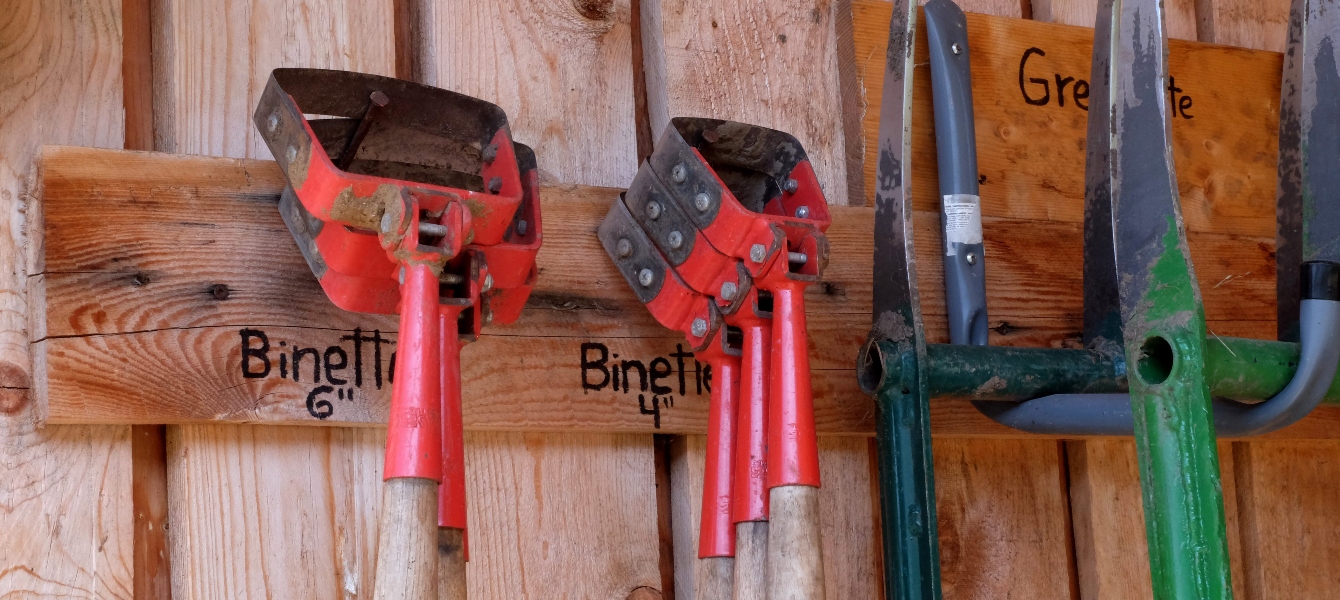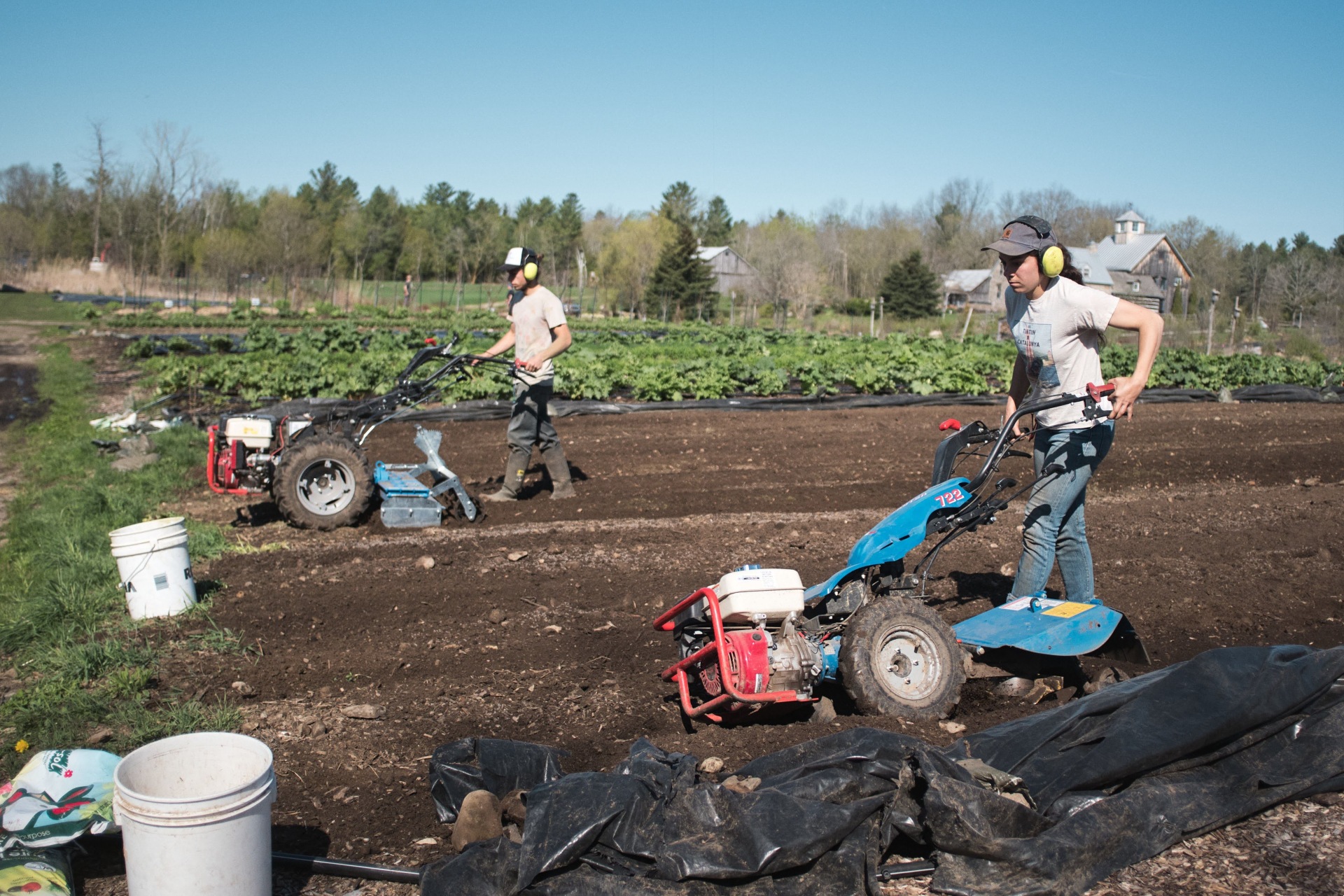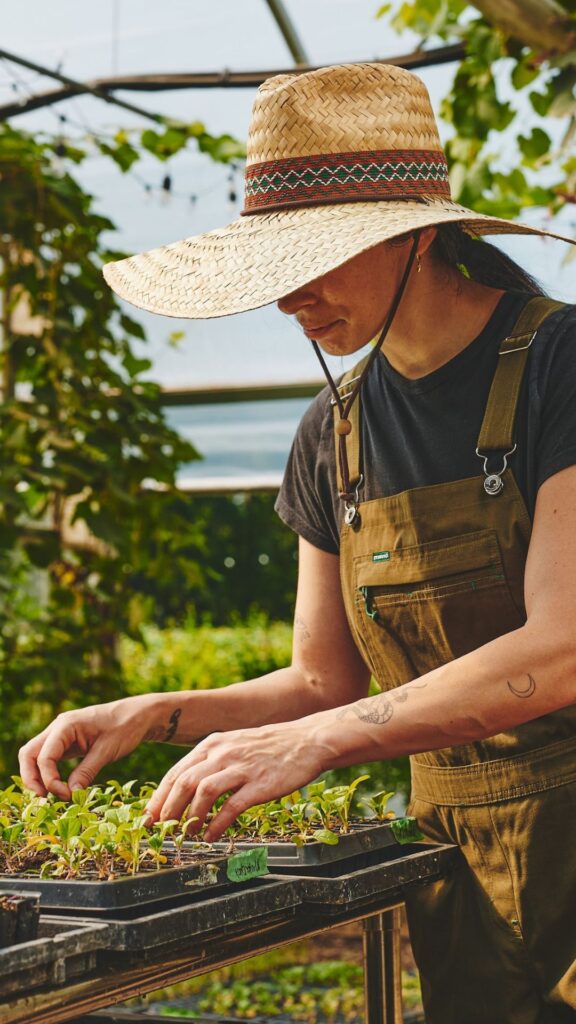The broadfork is one of our favorite farming tools. It is not a surprise to us why the broadfork is often used as a symbol of successful small-scale organic farming. Also called the ‘U-fork’, it is one of the most popular, affordable and effective supports for farmers and gardeners growing food on 1-2 acres.
In this post, we will explain the key purposes of a broadfork and why you should integrate this helpful tool when preparing your soil for planting.
What Is a Broadfork?
The broadfork is a very simple, human-powered hand-tool that can be a great addition for small farms and market gardens operating with minimal to no-till systems.
Forming a U-shape, the base generally consists of at least 12 inches of metallic tines (approximately 8 inches long each), spaced a few inches apart on a horizontal bar, which connects to two handles that extend to chest level.
As the first step to accomplish before seeding or transplanting, many growers typically reach for a broadfork whenever they’re preparing a permanent raised bed. Once done, it is typical to add fertilizer and use a power harrow or a tilther to integrate into the soil. From there, the bed is ready for planting!
Why You Should Use a Broadfork

Maintaining soil structure — and the soil food web it supports — is an essential component of successful vegetable production. Undisturbed soil allows for easier movement of a grower’s best friends (earthworms, fungi, and bacteria), which contribute to healthy plant life. Think of it this way: every time you double-dig or use a rototiller, and flip the soil over, you destroy your soil’s habitants, which then compromises their ability to help boost the soil’s biological fertility to its full potential. For this reason, we typically avoid farm-tools that penetrate more than a few inches into the soil’s surface. The one exception is the broadfork.
Compared to the impacts of using mechanical tillage or certain types of tools, such as spades, the broadfork can open the soil without disrupting it. This is advantageous for many reasons.
First, this means that dormant weeds are less likely to be brought towards the surface (we can all agree that less weeds = better life, right?).
Second, since the soil layers are not mixed up during this process, its structure is protected and the topsoil, in particular –which is rich with fertility– is preserved.
Due to its unique form and process, the broadfork is the ideal tool to gently aerate the soil which can help crops establish deeper root systems. This is critical since good soil structure equals good soil health, which equals good-quality vegetables!
Broadfork Is Cost-effective
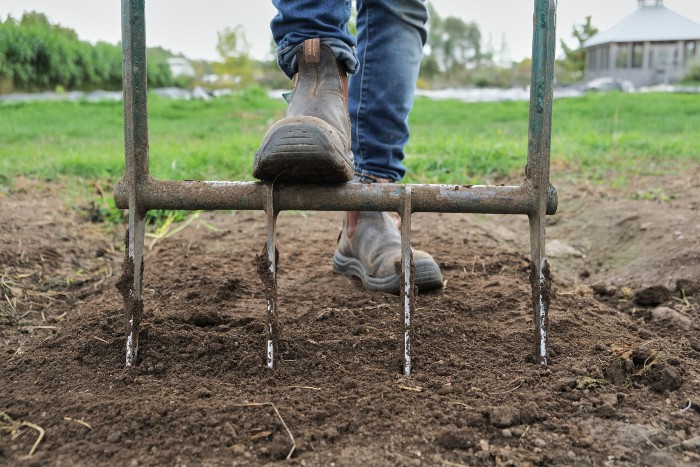
If you are not already convinced, there are more reasons too! Compared to the costs of using machinery or fancy technology, choosing a broadfork for bed preparation is a much more economical investment with long-term benefits. Plus, you can find one that can last you a life-time!
Looking for the perfect broadfork for your market garden? Our top choice is the Growers & Co. Broadfork, featuring wooden handles and reinforced tines. Its lightweight yet sturdy design, combined with the optimal length of both the tool and its tines, makes it perfectly suited for 30-inch permanent bed systems, as outlined in The Market Gardener.
If you’re looking for additional tool ideas, our annual guide featuring 30 practical small farm equipment options might be just what you need.

